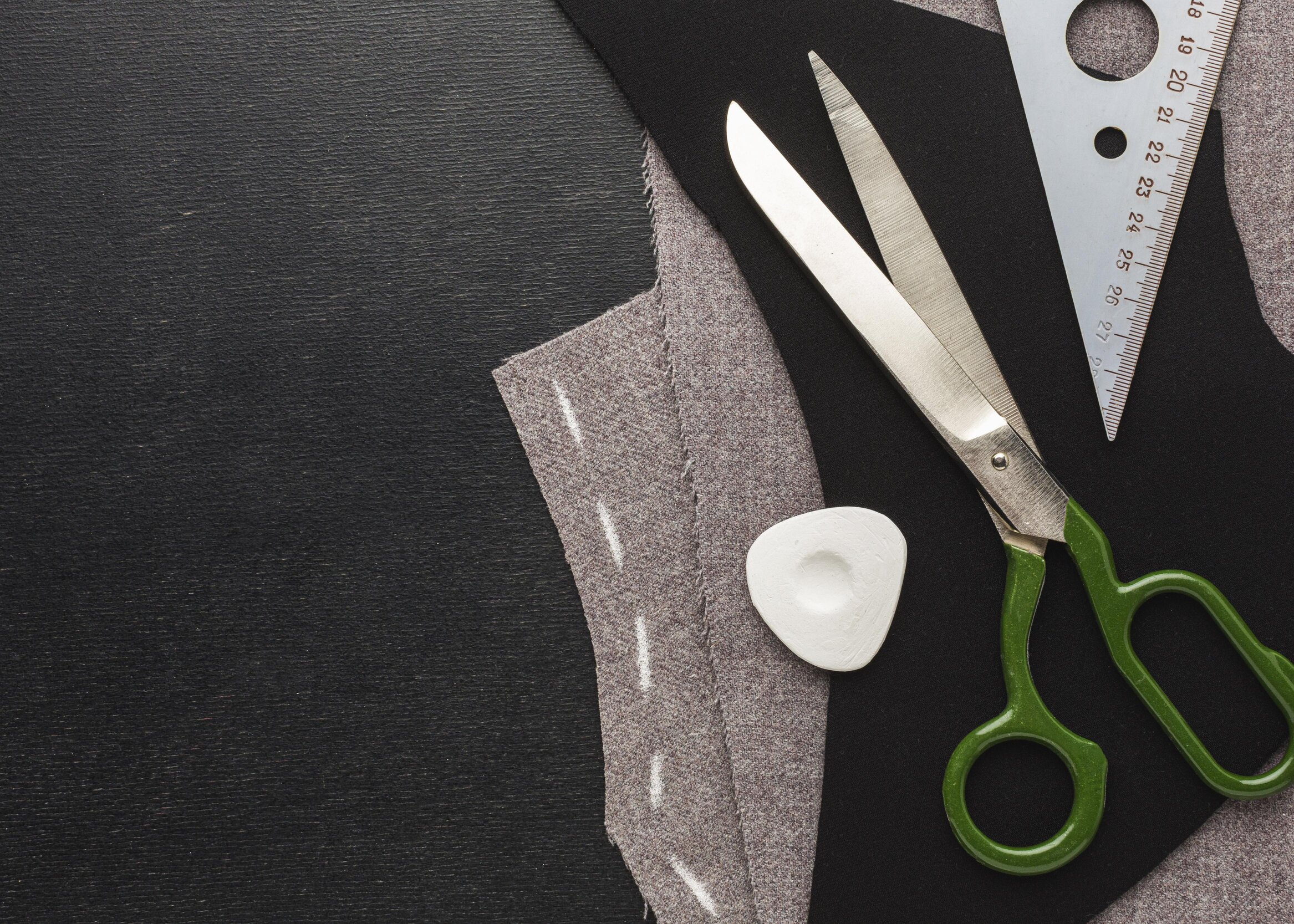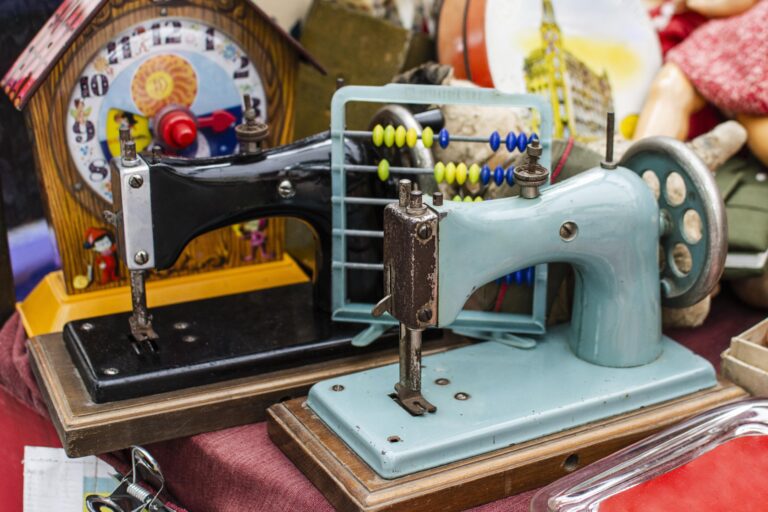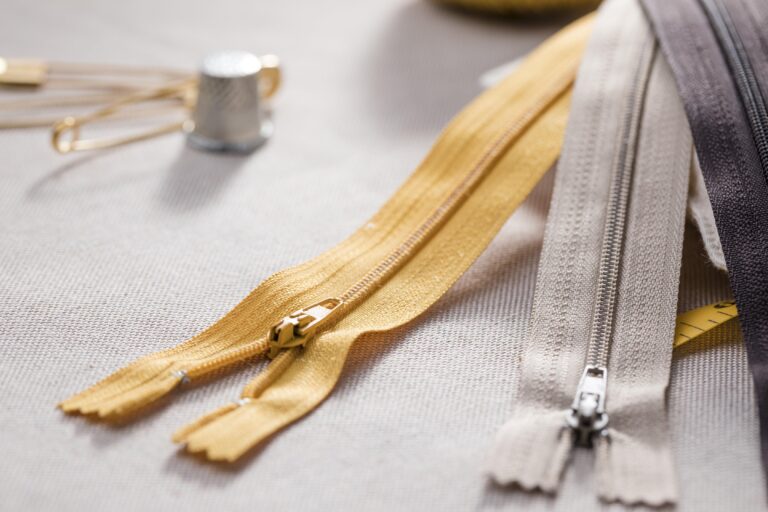Cutting with Precision: 7 Essential Tools for Cutting Sweat Fabric Like a Pro
Cutting fabric accurately is one of the most important steps in sewing. Whether you’re making a garment, a home décor project, or a quilt, precise cutting ensures that your pieces will fit together properly and look great.
In this post, we’ll go over 7 essential tools for cutting sweat fabric with precision like a pro.
Fabric Preparation
Before you even think about cutting your sweat fabric, it’s essential to prepare it properly. Sweat fabric is a stretchy material, which means that it can easily become distorted during cutting if it’s not stabilized first.
Also read: Sew Like a Pro: 20 Different Types of Sewing Machines
Here are some tips to help you prepare your sweat fabric:
Wash and dry your fabric before cutting: Sweat fabric can shrink or bleed, so it’s important to pre-wash it before cutting to prevent any unpleasant surprises later on.
Press your fabric with an iron: Make sure your sweat fabric is completely flat and free from wrinkles or creases before you start cutting. If your fabric is wrinkled, it will be much harder to cut accurately.
Use a stabilizer if necessary: If your sweat fabric is particularly stretchy or thin, you may need to use a stabilizer to keep it from distorting during cutting.
You can use a fusible interfacing, a spray stabilizer, or even tissue paper to help stabilize your fabric.
7 Essential Tools for Cutting Sweat Fabric Like a Pro
When it comes to cutting sweat fabric, it’s especially important to use the right tools and techniques to avoid stretching, distortion, or uneven edges.
Therefore, we will list 7 essential tools for cutting sweat fabrics
1: Fabric Scissors
The first essential tool for cutting sweat fabric like a pro is a good pair of fabric scissors.
While you might be tempted to use regular household scissors or a rotary cutter, these tools aren’t designed for cutting fabric and can actually damage your sweat fabric.
Here’s what you need to know about fabric scissors:
Choose the right size: Fabric scissors come in a variety of sizes, from small embroidery scissors to large dressmaker shears. For cutting sweat fabric, you’ll want a pair of scissors that are at least 8 inches long.
Look for sharp blades: The sharper your scissors are, the easier it will be to cut through your sweat fabric. Dull scissors can cause your fabric to fray or become distorted during cutting.
Consider the handle shape: Fabric scissors come in a variety of handle shapes, including straight, offset, and bent. The right handle shape for you will depend on your personal preferences and the size of your hands.
Use them only for fabric: To keep your fabric scissors sharp and in good condition, it’s important to use them only for cutting fabric. Avoid using them to cut paper, plastic, or other materials that can dull the blades.
2: Rotary Cutter
While fabric scissors are great for cutting out small pieces of sweat fabric, a rotary cutter is the tool of choice for cutting long, straight lines. Here’s what you need to know about rotary cutters:
Choose the right size: Rotary cutters come in a variety of sizes, from small 18mm cutters to large 60mm cutters. For cutting sweat fabric, you’ll want a cutter that is at least 45mm in size.
Look for sharp blades: Just like with fabric scissors, the sharper your rotary cutter blade, the easier it will be to cut through your sweat fabric. Dull blades can cause your fabric to fray or become distorted during cutting.
Invest in a self-healing cutting mat: A self-healing cutting mat is a must-have for rotary cutting. These mats are designed to protect your work surface and to prevent your blade from becoming dull too quickly.
They are made of a special material that “heals” itself after being cut, which means that they last a long time and provide a smooth cutting surface for your rotary cutter.
Use a ruler or a straight edge: To cut straight lines with your rotary cutter, you’ll need to use a ruler or a straight edge as a guide.
Make sure that your fabric is completely flat and that your ruler or straight edge is aligned properly before you start cutting.
3: Fabric Marking Tools
When it comes to cutting sweat fabric, precision is key. That’s why it’s important to mark your fabric accurately before cutting.
Here are some essential fabric marking tools that will help you cut sweat fabric like a pro:
Tailor’s chalk: Tailor’s chalk is a soft, crumbly chalk that is easy to see on most fabrics. It’s great for marking straight lines, curves, and angles on sweat fabric.
Water-soluble fabric pen: A water-soluble fabric pen is a great tool for marking detailed patterns or designs on your sweat fabric. The marks will disappear when you wash the fabric, so you don’t have to worry about them showing up later.
Pins or clips: Pins or clips are essential for holding your fabric in place while you’re cutting. Make sure to place them at regular intervals along the edges of your fabric to prevent any stretching or distortion.
4: Pinking Shears
Sweat fabric has a tendency to fray, which means that it can be difficult to keep your edges neat and tidy. That’s where pinking shears come in.
These special scissors have zigzag blades that create a finished edge that helps prevent fraying. Here’s what you need to know about using pinking shears:
Use them only on non-fray fabrics: While pinking shears are great for preventing fraying on sweat fabric, they’re not suitable for use on fabrics that fray easily, such as linen or cotton.
Cut with the zigzag edge facing the fabric edge: Make sure that the zigzag edge of your pinking shears is facing the edge of your fabric that you want to finish. This will create a neat, finished edge that prevents fraying.
5: Seam Ripper
Even the most experienced sewers make mistakes sometimes. When it comes to cutting sweat fabric, mistakes can be costly, since the fabric can be difficult to repair or replace.
That’s why it’s important to have a seam ripper on hand. This tool makes it easy to remove stitches and fix mistakes without damaging your fabric.
Choose a sharp seam ripper: A sharp seam ripper will make it easier to remove stitches without damaging your sweat fabric.
Use it carefully: When using a seam ripper, be careful not to cut your fabric accidentally. Take your time and work slowly and carefully to avoid any mishaps.
6: Fabric Glue
When it comes to cutting sweat fabric, some edges can be difficult to finish neatly. That’s where fabric glue comes in.
This handy tool allows you to create neat, tidy edges without having to sew anything. Here’s what you need to know about using fabric glue:
Use it sparingly: Fabric glue can be messy if you use too much, so make sure to use it sparingly.
Apply it carefully: When applying fabric glue, be careful not to get it on areas of your fabric that you don’t want to glue. Use a small brush or a toothpick to apply the glue precisely where you need it.
7: Electric Fabric Cutter
If you’re serious about cutting sweat fabric like a pro, you might want to invest in an electric fabric cutter.
This tool can help you cut through multiple layers of fabric quickly and accurately. Here’s what you need to know about using an electric fabric cutter:
Follow the manufacturer’s instructions: Before using your electric fabric cutter, make sure to read the manufacturer’s instructions carefully. This will help you avoid any accidents and ensure that you’re using the tool correctly.
Use it with caution: Electric fabric cutters are powerful tools, so make sure to use them with caution.
Keep your fingers and other body parts away from the blade at all times, and make sure to unplug the tool when you’re finished using it.
Conclusion
Cutting sweat fabric can be challenging, but with the right tools and techniques, you can achieve professional-looking results.
Remember to use sharp scissors or a rotary cutter, a cutting mat, and a ruler or straight edge to ensure accurate cuts.
Use fabric marking tools to help you create precise patterns or designs on your sweat fabric, and use pinking shears to prevent fraying.
Keep a seam ripper and fabric glue on hand in case you need to make any repairs or finish difficult edges. And if you’re serious about cutting sweat fabric like a pro, consider investing in an electric fabric cutter.
With these essential tools, you’ll be well on your way to creating beautiful, high-quality sweat fabric projects.


